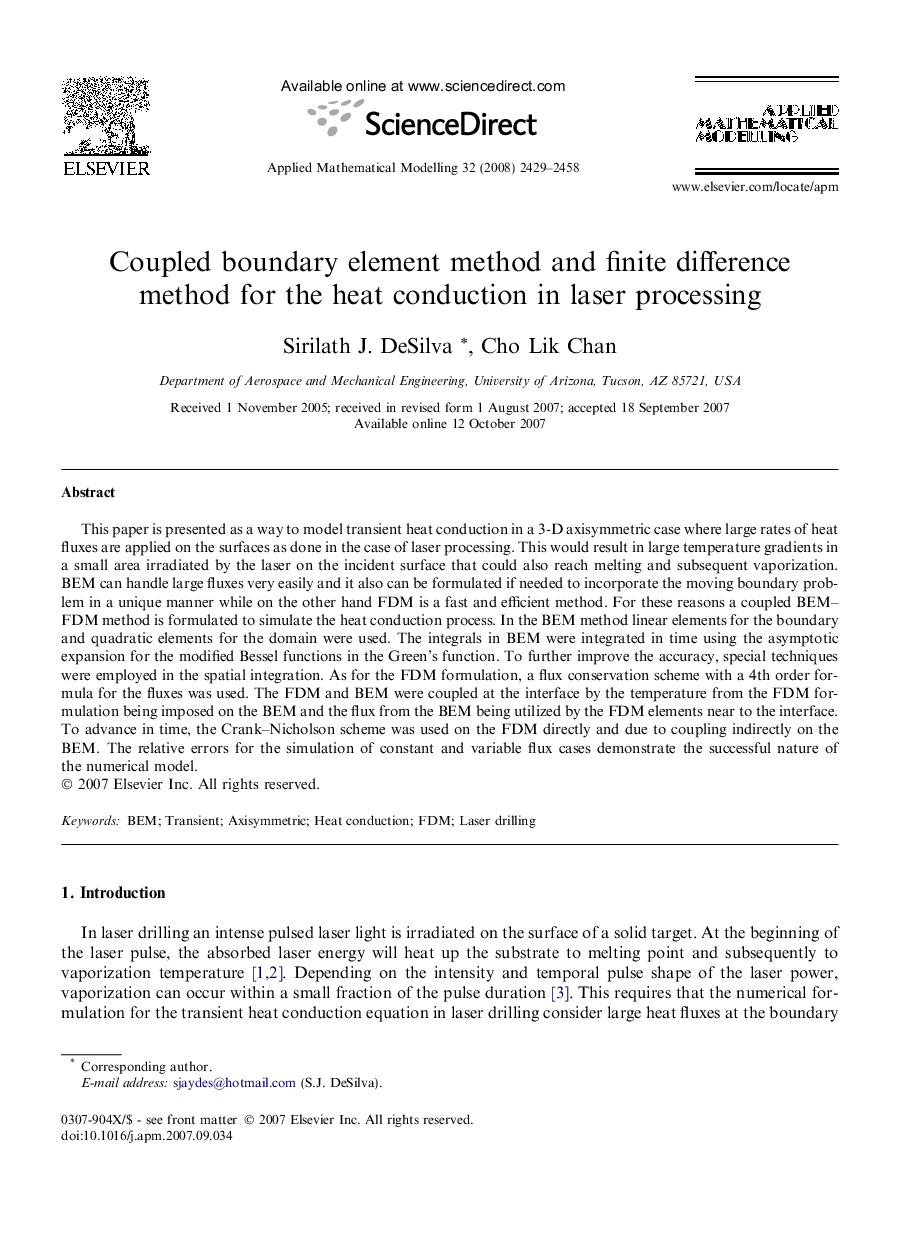| Article ID | Journal | Published Year | Pages | File Type |
|---|---|---|---|---|
| 1706249 | Applied Mathematical Modelling | 2008 | 30 Pages |
This paper is presented as a way to model transient heat conduction in a 3-D axisymmetric case where large rates of heat fluxes are applied on the surfaces as done in the case of laser processing. This would result in large temperature gradients in a small area irradiated by the laser on the incident surface that could also reach melting and subsequent vaporization. BEM can handle large fluxes very easily and it also can be formulated if needed to incorporate the moving boundary problem in a unique manner while on the other hand FDM is a fast and efficient method. For these reasons a coupled BEM–FDM method is formulated to simulate the heat conduction process. In the BEM method linear elements for the boundary and quadratic elements for the domain were used. The integrals in BEM were integrated in time using the asymptotic expansion for the modified Bessel functions in the Green’s function. To further improve the accuracy, special techniques were employed in the spatial integration. As for the FDM formulation, a flux conservation scheme with a 4th order formula for the fluxes was used. The FDM and BEM were coupled at the interface by the temperature from the FDM formulation being imposed on the BEM and the flux from the BEM being utilized by the FDM elements near to the interface. To advance in time, the Crank–Nicholson scheme was used on the FDM directly and due to coupling indirectly on the BEM. The relative errors for the simulation of constant and variable flux cases demonstrate the successful nature of the numerical model.
